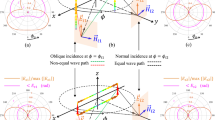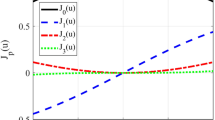Abstract
THE typical rotating back-scatter sounder1,2 uses a horizontal 3 or 4 element Yagi for both transmission and reception. The main-lobe width for such aerials is commonly about 60° between half power points, and when the aerial is used in conjunction with a ‘transmit–receive’ switch the effective lobe width reduces to about 40°. This means that echoes will tend to become ‘smeared out’ in azimuth to a greater or lesser degree depending on the received signal strength.
This is a preview of subscription content, access via your institution
Access options
Subscribe to this journal
Receive 51 print issues and online access
$199.00 per year
only $3.90 per issue
Buy this article
- Purchase on Springer Link
- Instant access to full article PDF
Prices may be subject to local taxes which are calculated during checkout
Similar content being viewed by others
References
Villard, O. G., and Peterson, A. M., Trans. Inst. Rad. Eng., PGAP-3, 186 (Aug. 1952).
Shearman, E. D. R., Proc. Inst. Elec. Eng., 103, B, 203 (March 1956).
Peterson, A. M., “Annals of I.G.Y.”, 3, Part 4 (Pergamon Press, 1957).
Author information
Authors and Affiliations
Rights and permissions
About this article
Cite this article
THOMAS, J., MCNICOL, R. A Highly Directive Rotating Array for 16 Mc./s.. Nature 187, 398–399 (1960). https://doi.org/10.1038/187398a0
Issue Date:
DOI: https://doi.org/10.1038/187398a0
This article is cited by
Comments
By submitting a comment you agree to abide by our Terms and Community Guidelines. If you find something abusive or that does not comply with our terms or guidelines please flag it as inappropriate.



